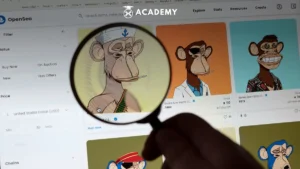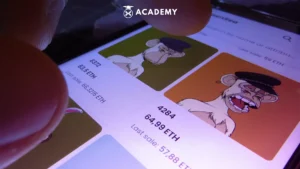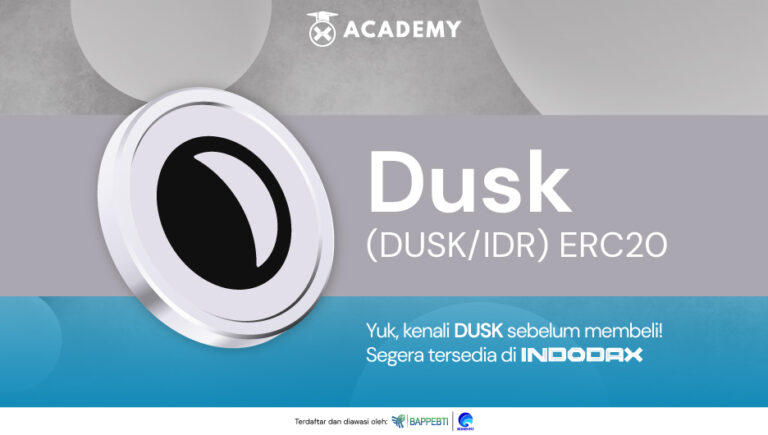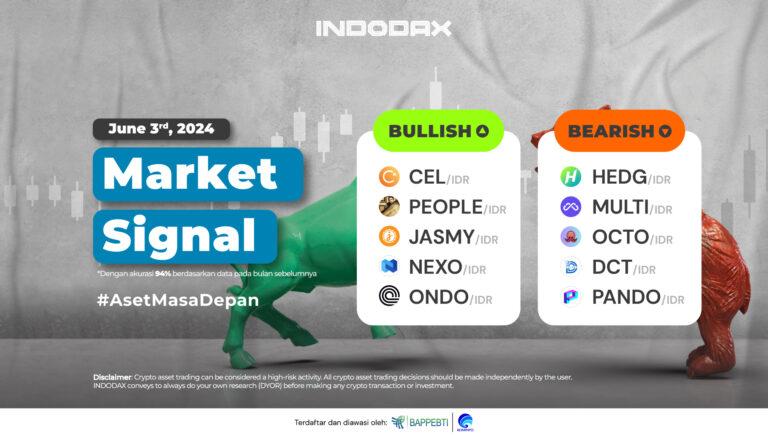Recently, one type of investment becoming popular with many people is the form of Non-Fungible Token (NFT) digital assets. In contrast to conventional cash purchases, NFT transactions can only be carried out using crypto assets.
In simple terms, NFT digital assets function as proof of ownership of digital works, such as digital art, music, games, audio recordings, video clips, etc. Meanwhile, turning a work into an NFT is called the minting process.
Essentially, NFT minting has changed the paradigm of digital ownership by providing the possibility to own and trade digital works without involving financial institutions. Of course, this gives artists and digital asset owners direct power or freedom to manage and profit from their work.
So, to understand what NFT minting is, starting from the definition, advantages, and disadvantages, things you need to prepare before doing it, to the risks and costs, see the full review below!
Definition of Minting
Minting is the process of creating crypto assets, which is carried out using the Proof-of-Stake (PoS) concept, which is a concept in crypto assets that explains that users can mine, print, and validate crypto transactions according to the amount they have. The existence of PoS makes the minting process easier by limiting crypto asset miners to prevent attacks or manipulation of the asset network.
Minting itself is the process of transforming digital objects into crypto, generally in the form of tokens. This token will then be stored in the blockchain system, making it decentralized.
What is NFT Minting?
NFT minting is the process of changing digital files into crypto collections or digital assets stored on the blockchain. In this regard, these digital items or files will be archived in a decentralized database or distributed ledger, and no subject can edit, modify, or manipulate these files.
Like the process of minting fiat currency, where producers mint physical coins, the process of uploading certain items onto the blockchain is called minting. The NFT creator can set royalties from each subsequent sale in the minting process. This royalty is the commission the creator receives every time his work is sold to someone else or traded on the secondary market.
What are the Pros and Cons of NFT Minting?

Owning an NFT, whether minted from a project or purchased from an NFT marketplace, will allow investors and collectors to become part of a rapidly growing industry. However, please note that NFT minting has advantages and disadvantages that must be considered.
Quoting ucollex.io, below is a complete explanation regarding the pros and cons of NFT minting:
Pros of NFT Minting
1. Portfolio Diversification
NFT Minting as an investor or collector helps diversify your portfolio according to long-term and short-term goals. A diversified portfolio provides investors with a safer, more stable combination of investments that may show relatively little growth and investments that offer higher growth potential, albeit with slightly higher risk.
Portfolio diversification also means investors have assets in various categories. More traditional investments, such as stock ownership, might mean owning shares in various finance, technology, and healthcare industries. Investors today increasingly recognize the huge opportunities non-traditional investments present, making NFTs an exciting new territory to explore.
2. More Affordable Entry Price Compared to Secondary Sales
Another advantage when it comes to NFT Minting as an investor is entering at a potentially cheaper entry price compared to secondary sales on the NFT market. Early investors have the opportunity to enter at the lowest price. This gives them the highest potential to see an increase in their NFT investment.
3. NFT Minting May Provide Rare Assets
NFT Minting from a new project at launch can result in immediate ownership of rare or valuable NFTs. While the risk is that the underlying price of an NFT could immediately drop, you may also have acquired a digital asset that is immediately considered rare, giving you a return on your investment from the start.
4. Quick Sell Option for Popular or Trending NFTs
For investors looking to make a quick profit, NFT Minting from new collections offers the opportunity to make money quickly. For popular or trending NFT collections being released, NFT drops can provide immediate profit potential.
If you have researched an upcoming NFT project and have determined it to be a good investment option, it may be worth taking the risk for quick selling profits.
Cons of NFT Minting
1. There is No Guarantee of Making Money
The most obvious drawback to minting NFTs as an investor or collector is that there is no guarantee that you will make any money. Purchasing an NFT at launch carries an inherent (permanent) risk that the collection may be less successful than anticipated. Please note there are thousands of NFTs created regularly in the NFT marketplace, but not all will succeed.
2. Base Price May Decrease
Another drawback of minting NFTs as an investor is that the floor price of a new collection can drop lower than the minting price. This will result in immediate losses. Unsold collections and decreased minting volumes can affect the stability of the project in the short and long term.
3. There May Be Fraud When Minting NFTs During Presale
As with other types of investment, you always have to be alert to potential fraud. Being part of the allowlist for a presale of a new NFT collection is a dream for many investors, but make sure it’s legal before you decide to invest.
Scams pretending to be NFT presale launches are common on Discord. Remember that project administrators will never send you a private message with a mint link, so if you are approached this way, it is most likely a scam.
4. Surging Gas Costs and “Gas Wars”
When a new NFT project becomes popular, gas fees can spike during the initial public sale. This is called a “gas war,” which causes minting costs to soar and can harm your potential profits as an investor. That’s why being part of the allowlist for presale is the best option if you can position yourself to do it.
What Needs to be Prepared Before NFT Minting?
After understanding the advantages and disadvantages of NFT minting, now is the time to determine what needs to be prepared before minting NFTs. Before starting the minting process, several preparations need to be made, including:
1. Choose A Blockchain Platform
A very important first step for beginners is to choose a blockchain platform. This is related to the estimated gas fee for NFTs and their speed. Gas fees are transaction processing fees on the blockchain, similar to admin fees in banking transactions. Each platform has different fees and speeds: some popular platform choices are Tezos, Binance, and Ethereum.
2. Select NFT Marketplace
After choosing a blockchain, the next step is choosing a marketplace to mint NFTs. Things that need to be considered include the marketplace’s ability to transfer and make transactions on other blockchains, the amount of the gas fee, and the profit-sharing system. Also, check the duration of the NFT minting process and the trustworthiness of the marketplace.
Some well-known NFT marketplaces are Rarible, Foundation, and OpenSea. As for OpenSea, for example, it is similar to eBay or Amazon, where NFTs are sold and bought online, with crypto assets as a means of payment. To date, OpenSea has become a platform that serves more than 300 thousand users and handles more than three million NFT transactions.
How to Mint NFTs Using Opensea?
It should be understood that each NFT market has a slightly different method for minting NFTs. In the guide below, you will learn how to mint NFTs using one of the largest and most popular NFT marketplace platforms, OpenSea. Quoting fool.com, here are the steps.
1. Connect Crypto Wallet
To start, you must open a crypto wallet and connect it to the NFT marketplace. In OpenSea, please click the wallet icon or “Create” button in the top right corner to get started. Other marketplaces will also use similar commands to connect your wallet and create a profile, according to your wallet, such as MetaMask Wallet or Coinbase Wallet, and the device used (computer or mobile).
Next, you will be asked to connect your existing wallet using a QR code scanner on your smartphone or download it to your computer via your wallet. Once your crypto wallet is connected and a market profile is created, it’s time to complete the existing profile. Tell the NFT world about yourself, insert a link to your website or social media page, and determine which crypto asset will be used as payment when someone buys your NFT.
2. Create First Item
From the main page of the marketplace, click the “Create” button in the top right corner. From there, you will be asked to upload a digital file and give your NFT a name. Optional fields include a description of your work, external links for further information (such as your website), and which blockchain the NFT will be based on (such as the Ethereum blockchain or the Ethereum-based protocol Polygon if you use OpenSea).
You can also set how much of a royalty payment you will receive if your NFT is resold later. Royalties of 5% to 10% of the secondary sales price are considered standard royalty payments. Next, click “Complete,” and your first NFT has been created.
3. Make Sure Your Wallet is Filled
Selling an NFT (recording that a transaction has occurred between two parties on the blockchain) requires the network to perform some calculations. The transaction will require a sum known as a “gas fee.” Pay attention to the required transaction fees, as some can be higher than expected.
To complete your first sale, make sure you have purchased some Ethereum (or any other cryptocurrency you plan to use) in a crypto trading app and deposited it into a wallet. According to the market, you can then transfer crypto from your wallet to your NFT market account.
Some marketplaces, such as OpenSea, allow you to buy crypto directly from your marketplace profile by setting up a payment method such as a credit card. If you’re unsure how much crypto you need to buy, it will be calculated automatically in the next step.
4. List NFTs for Sale
Once you have minted an NFT, you can sell it on the open market. Click the “Sell” button in the top right corner of your NFT description page. Now, it’s time to determine the details of your sales. Choose the type of sale – fixed price based on crypto selection or time-based auction.
As a note, in OpenSea, you set royalty payments for ongoing passive monetization of your work over time in the second step above, but other marketplaces may make it an option at this stage. The marketplace will also disclose the associated fees for sales. At OpenSea, the service fee (the price for handling the listing) is 2.5% of the NFT sale price.
Next, click “Complete listing,” the market will calculate gas fees based on the level of crypto network activity at the time of registration and request payment from your crypto wallet. The costs will vary from minute to minute. Once the gas fee is paid and you agree to the final terms, the NFT will be listed and available on the marketplace.
5. Manage NFT Business
Once your NFT is created and sold, it’s time to interact with your potential customers. You can also create more NFTs and make them part of a collection, which may attract the attention of art collectors or speculators.
NFTs created on one marketplace can also be transferred and sold on other marketplaces, although additional fees may be involved. As with every online activity, interacting with users and collectors in the NFT marketplace builds relationships that can help build your new NFT business. Monitor activity on your works, seek feedback, and continually create more works for digital collectors to purchase.
Does Minting Have Risks?

Being involved or involved in the NFT realm is certainly not free from risks. The following are some risks that may occur when minting, including:
1. Need to Sharpen Analysis to Avoid Losses
Like stock analysis, it is necessary to carry out a more careful analysis of crypto assets. Please remember crypto assets have a high level of volatility, so it is important to understand how to manage these digital assets so as not to experience losses.
2. Vulnerable to Piracy
Although the blockchain records a user’s identity when creating a digital work of art, it cannot always record the work of art in the blockchain. For example, as quoted from metanesia.id, the case where Ridwan Kamil’s artwork was sold on OpenSea by another party shows that a work can have the same representation but by a different artist.
3. NFT Not a Proprietary Purchase (Copyright)
Purchasing an NFT does not mean acquiring the product’s ownership rights (copyright). What is purchased is a product representation in the NFT world.
4. Easy to “Fry” Prices
Due to the anonymous nature, it isn’t easy to know who is purchasing NFT products. This can lead to easily manipulated prices, where the original value can be changed non-transparently. “Frying” refers to manipulating price values that can be carried out relatively easily.
For example, when A sells his work on OpenSea for IDR 10,000,000, he creates a new account and buys it for IDR 30,000,000. This pattern can be repeated repeatedly, implying that work A has a high profit potential.
How Much is the Cost of NFT Minting Gas Fee?
As NFTs are minted on various blockchains, their prices naturally vary. When using the same blockchain, the fees or gas fees associated with minting one NFT may differ from another.
Several factors, including project quality, data size, transaction speed, etc, can influence the costs or gas fees in the NFT minting process. The following are the gas costs for NFT mining on several well-known NFT marketplaces, namely:
1. Coinbase NFT
Coinbase NFT is a relatively new player in the NFT market arena, but it is quickly gaining attention. Coinbase NFT is a platform for buying, selling, and trading digital art, collectibles, and other digital assets.
The platform is designed to provide users with a safe and regulated environment for discovering and purchasing digital assets. Coinbase NFT also offers a variety of tools and services, including a portfolio tracker, marketplace, and platform for trading digital assets. Buyers are charged 3.5% of each purchase, while sellers are charged 10%.
2. OpenSea
OpenSea is one of the leading NFT marketplaces that allows users to buy, sell, and trade digital collectibles such as works of art, gaming items, and other exclusive digital collectibles. This marketplace supports two common NFT standards, namely ERC-721 and ERC-1155. Users are charged a fee of 2.5% for each transaction.
3. Rarible
Rarible is another popular NFT marketplace that empowers users to create, buy, and sell digital collectibles. Running on the Ethereum blockchain, Rarible facilitates minting, buying, and selling digital art, music, and other digital assets. The platform charges a fee of 3% of all sales, which is split between the seller (2%) and Rarible (1%). Additionally, buyers must pay a fee of 0.3% for each purchase.
4. SuperRare
SuperRare operates as a digital art marketplace on the Ethereum network. In addition to the standard options for minting and trading NFTs, the platform offers features such as creating custom collections, organizing auctions, and tracking sales history.
SuperRare also provides an Application Programming Interface (API) that allows developers to build applications on the platform. The marketplace charges a 5% fee for each sale, which is used to cover platform operational costs and provide rewards to the community.
Conclusion
In conclusion, NFT minting has become quite important in changing the digital ownership landscape, significantly impacting how people view and utilize digital assets. By understanding the importance of the minting process, anyone can utilize it to prove unique ownership of their digital work.
Furthermore, anyone needs to continue exploring the exciting world of NFTs by creating their own works and collecting valuable works from artists and creators. In an era where innovation continues to develop like today, of course, being part of the NFT phenomenon will provide an opportunity to be involved in significant changes in how we interact with works of art, music, and other digital assets.
As additional information, you can also read other interesting articles about the world of NFT, starting from a list of the most popular NFT marketplaces in the world to the most expensive NFT monkeys only on INDODAX Academy.
It is important to broaden your understanding of blockchain technology and crypto assets. You are strongly advised to read the latest articles available on INDODAX Academy. The material presented on INDODAX Academy ranges from basic concepts to more complex aspects regarding blockchain technology and crypto assets.
By reading various articles on INDODAX Academy, you will gain in-depth knowledge about blockchain technology, including its application, and obtain the latest information regarding crypto assets.
Invest in Crypto Assets on INDODAX
So, now you understand what NFT minting is, starting from the definition, advantages and disadvantages, things you need to prepare before doing it, to the risks and costs.
Next, if you are interested in investing in crypto assets, choosing a safe and trustworthy crypto exchange on INDODAX would be a good idea. Before buying the crypto asset of your choice, it’s a good idea to check the crypto market at INDODAX Market first. After reviewing the price, you can buy crypto assets on INDODAX. For information, INDODAX is Indonesia’s first crypto buying and selling platform and has received regulations from the Commodity Futures Trading Supervisory Agency (BAPPEBTI). In this way, INDODAX also guarantees the security and trust of its investors, traders, and members.
With a primary focus on security and reliability aspects, INDODAX has provided access to various advanced trading features and a variety of crypto assets.
Let’s invest and trade crypto on INDODAX starting now!








